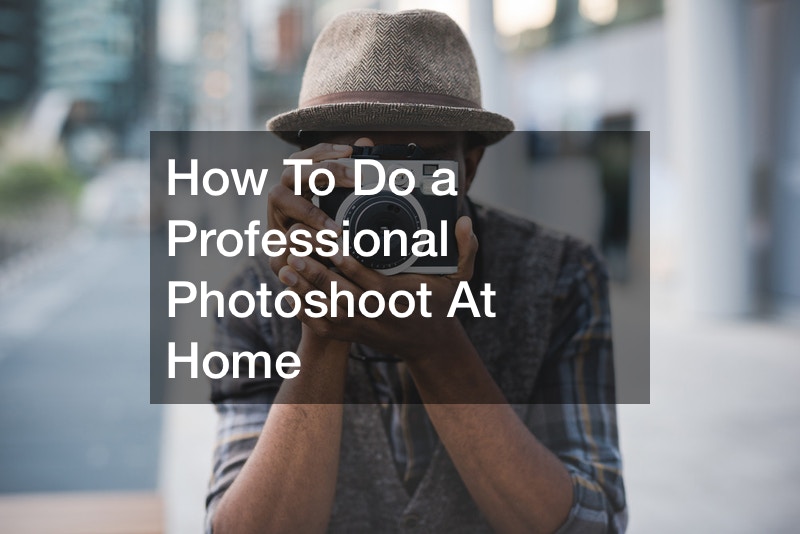
You’ve decided to join the brave new world of content creation. You want to chart your path in the photography world. This is an interesting medium for making and telling stories.
Have you bought your equipment yet? They’re expensive, so keep them in the best and safest places. You’ll need them in tip-top condition to serve you for a long time. The beauty of photography is that your passion can turn you into a pro with digital photography. Read along for some tips on how to ace your job.
1. Keep Your Equipment Safe

Your photography and video equipment are costly. Think about how to preserve them to serve you best and for a long time. You also want the quality of your photos to remain very high.
Regularly clean the equipment with a soft, lint-free cloth. A blower brush will remove dust from the sensor and other hard-to-reach corners. A microfiber cloth is best for cleaning the camera’s exterior and the lenses. Cameras accumulate dust and debris over time as you move around for work.
As one determined to be a pro with digital photography, handle the camera gear with utmost care. When attaching and removing lenses, be gentle and avoid dropping them. Have a camera strap on whenever you’re handling the camera to protect it from accidental dropping.
Store your equipment in a dry, moist-free place. Don’t leave them in a place where they are likely to face floods and storm damage. Remove batteries when the camera isn’t in use and store them according to instructions.
2. Lock Up Your Camera
As an aspiring pro with digital photography, learn early how to store your lenses to protect from damage. Dust, dirt, chemicals, water, humidity, and extreme weather can enter the elements of your lens. The results will be a spoilt image resolution and damaged optical integrity.
Invest in a specially designed storage shed for your camera. This can be set up in a particular space in your home or office where water and other elements can’t reach. Such a structure will allow you to lock all your supplies conveniently.
There are camera bags of various shapes and sizes with special features. Lens storage bag options include messenger bags, slings, and backpacks. Visit a camera shop and ask for help choosing a suitable storage option for your equipment.
You’re options will vary depending on the size and number of lenses. Their prices also change depending on the storage capacity. Do all you can to protect your lenses to guarantee long-term use.
3. Invest in a Tripod
A tripod is crucial to your picture quality and your camera’s safety. Your photos and videos shouldn’t be shaky or vibrating, and that’s where the tripod comes in. It holds the camera and keeps it completely steady.
The tripod head is bought separately from the legs and center column. Some tripods are made of carbon and can withstand strong winds. Aluminum tripods are good but can be weak when working in extreme weather.
A tripod can make you feel like a pro with digital photography. It stabilizes your camera, making it easy to try out different techniques of photography, such as HDR photography, low-light photography, and long exposure.
Setting up the tripod sometimes takes a while. That process slows you down and purposely allows you to take in your surroundings and set the camera’s position appropriately. Therefore, you think through your photo composition, giving you better photos.
Buy a tripod with a strong grip that can stay stable on everything from industrial flooring to rough terrains. You don’t want your expensive equipment tripping over and breaking just because you have a weak tripod. A heavy tripod will restrict your movement, hence minimizing accidents such as tripping.
4. Don’t Trespass

Before setting out for a photography assignment, knowing the regulations of where you’re going would be good. Knowing where public property ends and private space begins can be hard. This applies not only to buildings but also to spaces such as animal parks and conservancies.
Trespassing isn’t just being on private property without permission. The clear lack of permission or formal access to the space means you’ve been denied entry. Some properties have a clear No Entry sign on their gates or fences.
However, not all places will put up a sign to warn you as a pro with digital photography. Some states have passed laws that don’t require a property owner to put up warnings, whether in writing or verbal, denying people entry. In Indiana, the purple paint law permits the property owner to forego posting the No Trespassing sign and instead put up vertical purple lines on trees or posts to send out the same message.
You could be slapped with a criminal trespassing case. You must pay a criminal lawyer to represent you in your trespass case, which is more money out of your pocket. Trespassing at public utility properties may land you in big trouble. Some properties have serious security concerns, such as schools or the airport, which is understandable and more reason to do your due diligence.
5. Find Interesting Subjects
As a budding photographer who one day aims to be a pro with digital photography, you can practice with numerous easy subjects. Nature photography comes with offerings from the bounty of nature. You can photograph flowers, bushes, the sunrise, sunset, and meadows. The Spring and Summer seasons bring out interesting subjects such as insects, butterflies, and colorful plants.
Still life is another favorite for beginners. You’ll arrange items against a plain backdrop, then snap away. You can set up a basket of fruits, a pile of books, and a lineup of bottles and experiment with various lighting options to produce amazing images.
Another interesting subject is snapping images of animals. You can capture candid, funny, or challenging images, such as when the dog trainer takes a dog through a lesson. Always aim to capture the eyes and emotions of the animal subject.
6. Network With Your Community
As a content creator looking to become a pro with digital photography, you need to market your work to get business. When meeting up with other professional photographers, share your profile and business contacts with like-minded people. Networking is good because whenever a project suits you, your colleagues will link you up. Attend events and workshops where fellow photographers are invited. This way, you learn new skills and showcase your work.
Start a photography blog or podcast. This is the space where you can share your advice, insights, and experiences regarding photography. You can invite guests such as veteran photographers to speak about their journeys.
You can also review photography-related products and share feature stories. Once in a while, you can include a unique, unrelated topic or guest, such as bakery products. During such a program, invite a pastry chef to share insights on their work while you share tips for baking photography.
7. Go to Events

One way to grow your career to the level of a pro with digital photography is to cover events. There are numerous events, such as weddings, birthdays, and corporate events. Aim to cover conferences and political rallies as well.
As a photographer seeking to specialize in weddings, the WPPI annual conference and expo would be a must-attend. It’s held in Nevada and brings together many photographers specializing in weddings and portraits. This platform for learning and education offers lots of opportunities for growing your career.
Another interesting event is PhotoPlus in New York City. You’ll interact with over 22,000 photographers and immerse yourself in classes teaching the latest technologies in the industry. There are seminars on lighting, workflow, shooting, and photo reviews.
Mingle with hundreds of vendors and the particular event caterer. You can learn a thing or two about preparing meals for major events. The caterer can link you to event organizers, giving you a valuable industry collaborator.
8. Take Photography Classes
The fastest and surest route to becoming a pro with digital photography is enrolling in school. Keep learning and improving your knowledge, skills, and creativity. By attending school, you’ll be up to date with the latest techniques, tools, and trends in photography.
You test new genres, styles, and projects while learning in a class environment. Coursework in some of the best schools pushes you to immerse yourself in research as you watch videos and read widely for your assignments. Through group assignments, you learn from other students and improve your skills.
When you learn and get a certificate and a practice license, you enhance your professional portfolio and confidence and improve your professional value. Attend conferences organized by professional photography organizations.
You’ll learn the latest techniques and tricks at these conferences to keep succeeding. Even as a seasoned photographer, these conferences open you to new ideas. You can only improve your trade by watching the demonstrations, sitting in the workshops, and listening to various presentations from respected industry professionals.
During the masterclasses, you can take a particular segment within photography and study it at a deeper level. The classes are conducted by industry giants who understand their trade. You can ask questions and interact freely with professional photographers you won’t meet on a regular day on the streets.
9. Clean Your Camera
Handle your digital cameras with extra care due to their sensitive parts. Protect your camera from getting wet if it’s not waterproof. If moisture builds up inside it, your camera’s internal parts will get damaged.
If you notice small dots in images you’ve snapped with your camera, dirt, and grime have found a home inside. When grime infiltrates the interior of your camera, it starts to build upon the image sensor. Without a clean camera lens and sensor, your camera will produce poor-quality images.
Avoid using materials or clothes that are too abrasive to clean your camera. A paper towel, for instance, will cause scratches to the glass surface. Instead, use a dry microfiber cloth, which is gentler.
Blow away the small particles in your camera before using the microfiber cloth to wipe it. Cleaning the lens and camera sensor is a daunting task, even for a pro with digital photography. Never use air compressors or canned air to blow off your camera’s particles because they can blast the lens and break the glass. If this accident occurs to your equipment, seek glass services in a reputable camera shop and find out if they can repair your lens.
10. Raise Money for Lenses

Lenses are an expensive investment. As your photography career continues to gather steam, you’ll need more types of lenses for the work. One method of raising money for new lenses is by seeking photography jobs.
People with events such as weddings, parties, and other gatherings will likely need professional photography to freeze their memories. As a pro with digital photography, approach the event organizers and present your photography portfolio. Ask them for an opportunity to take photos and present your rates for the work.
Another way is to sell your photos online. Subscribe to websites that can buy your images. Present your profile and images to them. Once they buy and pay for your images, save money for lenses.
You can also approach the local pawn shop to get some money. You can present one of your photography gear and trade it off for an amount that can help you purchase better lenses. You must work fast to pay back their money, or your valued possession will be sold off.
Photography is becoming more accessible thanks to cheap cameras and powerfully made smartphones. When you study how to take photos, you improve your technical capabilities to express your artistic self. You become a skilled hand in lighting, organizing your photos, and how to use lenses and filters.
Photography means opening yourself up to a fulfilling career in sectors such as photojournalism and business. It has the potential to connect people regardless of their location in the world. What began as a hobby can become a full-time career taking you to different parts of the world.
Start with what you have and where you are. You don’t need fancy cameras to begin your quest for extraordinary images. This isn’t exhaustive. What remains is for you to take the first step to build a career as a pro with digital photography.




